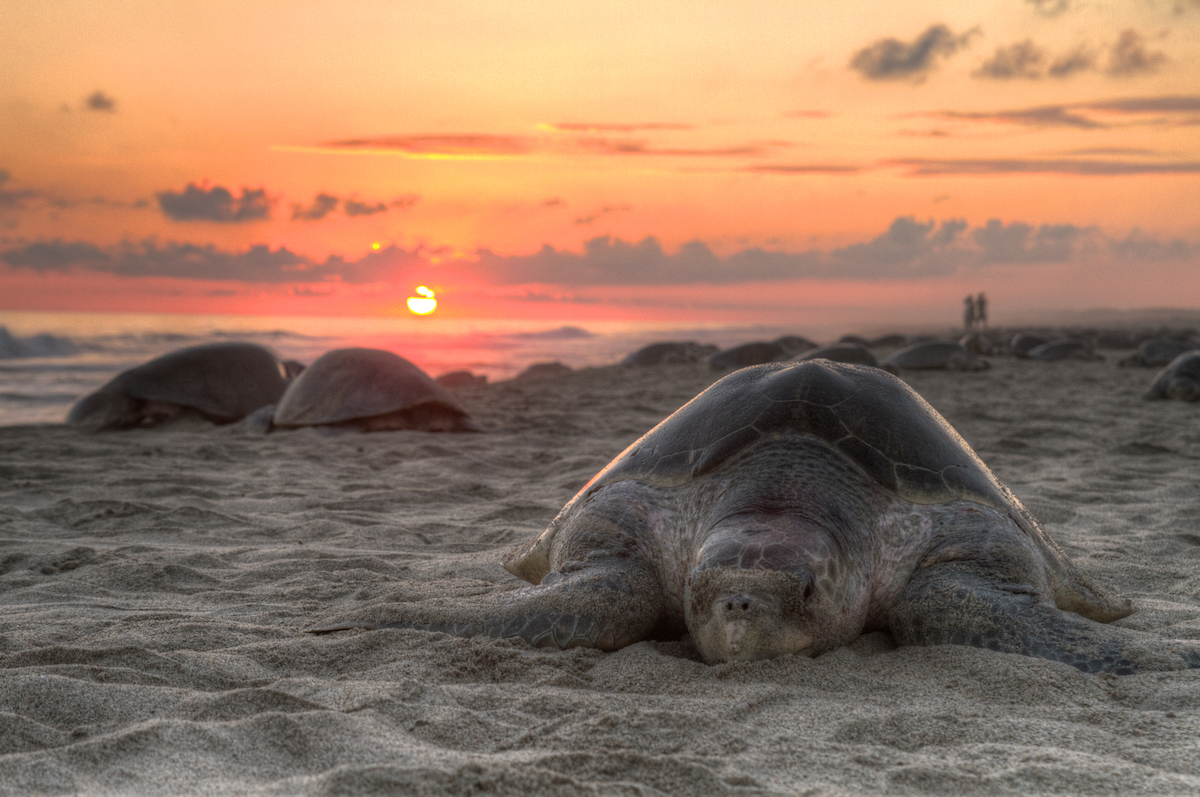Rising temperatures could produce only female hatchlings and leave sea turtles facing future summers of no love.

All sea turtles lack sex hormones. An embryo develops into a male or female based on surrounding conditions as an egg incubates in the nest, primarily temperature. Lower temperatures produce more males, higher ones, more females. Generally, at about 29 degrees Celsius (84.2 Fahrenheit), roughly equal numbers of males and females hatch. This tipping point varies slightly for different species of sea turtles.
At a number of sea turtle nesting beaches around the world, scientists already see rising temperatures producing primarily or even exclusively females. A recent study in Current Biology reports that 99 percent of juvenile and subadult Green sea turtles (Chelonia mydas) on the northern Great Barrier Reef are female. Temperatures at Rancho Nuevo, Mexico, the primary nesting beach for the highly endangered Kemp’s ridley turtles (Lepidochelys kempii), now tilt far to the female-only side, according to scientists there. And in Palm Beach County, Florida, Loggerhead sea turtle (Caretta caretta) hatchlings have been as much as 100 percent female biased since 2002.
Given that experts predict an average global temperature increase of 2.6°C by 2100 – just a few generations from now — the sea turtle future looks increasingly female.
Short term, that sounds like good news for male sea turtles, and even for the species overall, since more females means more eggs. Up to a point, more females than males maximizes the reproductive potential of the population, which probably explains why most sea turtles nest during the hottest time of the year. But scientists don’t know the ideal ratio of males to females, and at some point, the guys simply won’t be able to keep up. Thane Wibbels, zoology professor at University of Alabama Birmingham puts it this way: “The question that we don’t have an answer to is, what is enough males?”
Or, more specifically, what would be enough males in a particular location? Males of breeding age tend to stick close to what researchers quaintly call “courtship areas” in the vicinity of the beach where they were born. That means females in areas that end up bereft of males can’t look for love from the neighbors.
Sea turtles appeared before the dinosaurs, 100 million years ago. They have adapted to changing environments in the past and theoretically can adapt to rising temperatures, perhaps by moving to new nesting grounds or adjusting the timing of nesting. But scientists say these species likely cannot make such changes quickly enough to save the males.
Other research offers a bit of good news: rainfall and humidity, also increasing in many areas, make for wetter sand around nests and that seems to offset the female bias from higher temperatures. On the other hand, rising sea levels threaten to completely inundate some nesting beaches.
At any rate, the question of how many males the sea turtles need may eventually become irrelevant. When temperatures rise to around 35 C (95 F), sea turtle embryos die. That means summers of no newborn-baby turtle joy as well as no love.
